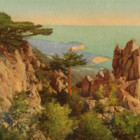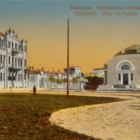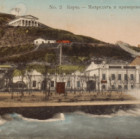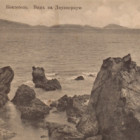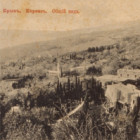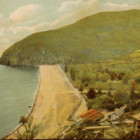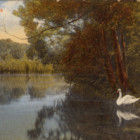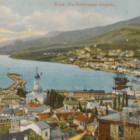Crimea in postcards
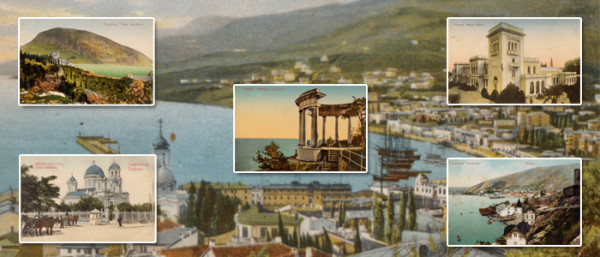
In 1783 the Crimea was incorporated into Russian Empire, the city of Sevastopol was founded, which became from the beginning of the XIX century the main military harbor in peninsula that is home to Black Sea Navy Fleet. From the second half of the XIX century, the southern coast of the Crimea turns into a blooming resort: palaces and mansions for the imperial family members and the privileged strata of Russian Empire are under construction. After the establishment of Soviet power and the signing in 1921 of a decree on the use of the Crimea for providing soviet workers with medical treatment, the peninsula turns into an all-Union health resort. Agriculture, science, resort and tour operator businesses begin developing in the region.
During the Great Patriotic War the Crimea is turning into the territory of fierce battles. The cities of Kerch and Sevastopol, health resorts, historical monuments were severely damaged. In post-war period, all Soviet republics were involved in the restoration of the Crimea. In 1954, by the decree of the Presidium of the Supreme Soviet of the USSR the territory of the Crimean Oblast was reassigned from the Russian SSR to the Ukrainian SSR. From 1991 to 2014, the territory of the Crimean peninsula was a part of now independent Ukraine.
On March 18, 2014, the Treaty between the Russian Federation and the Republic of Crimea on an admittance of the Republic of Crimea to the Russian Federation and the formation of new constituent entities in the Russian Federation was signed. On March 21, the Federal Constitutional Law was signed On an admittance of new constituent entities — the Republic of Crimea and the Sevastopol city of federal significance and the federal law On ratification of the Treaty between the Russian Federation and the Republic of Crimea on an admittance of the Republic of Crimea to the Russian Federation and the formation of new constituent entities in the Russian Federation.
The collection includes 850 postcards of late XIX — first half of XX centuries. The collection entries are organized geography-based and are published in the alphabetic order of geographical places names. Section-vised the postcards are grouped according to sightseeing places of a particular locality.
Materials of this collection courtesy of the Children’s Museum of Greeting-card.


